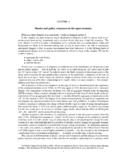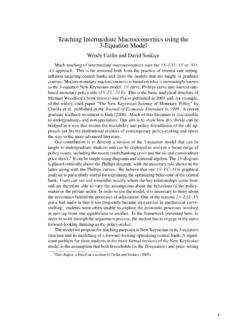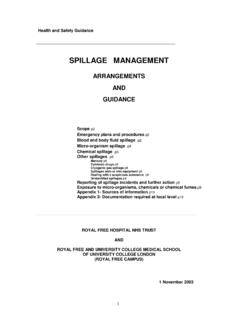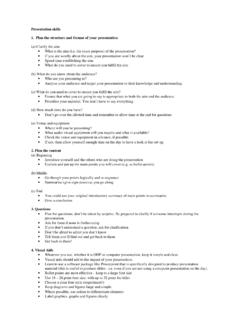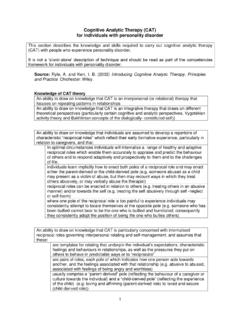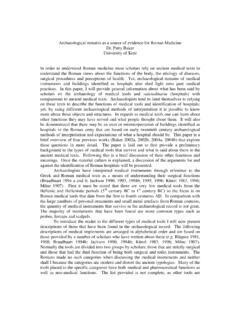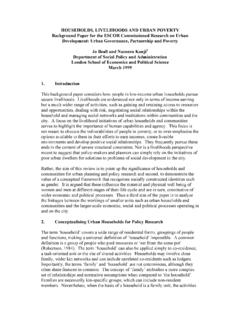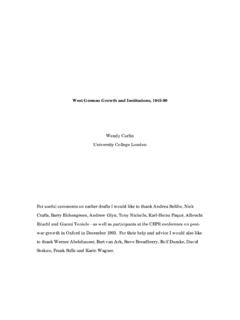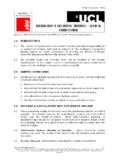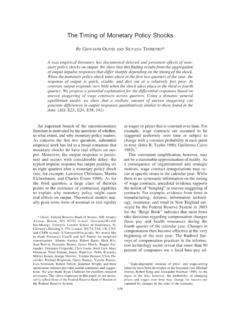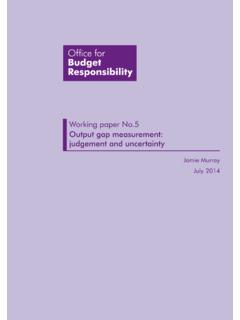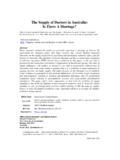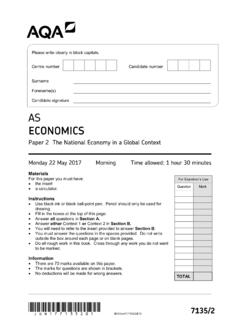Transcription of The 3-Equation New Keynesian Model — a …
1 The 3-Equation New Keynesian Model a GraphicalExpositionWendy Carlin and David SoskiceUniversity College London and CEPRDuke University, LSE and Wissenschaftszentrum BerlinFebruary 2005 AbstractWe develop a graphical 3-Equation New Keynesian Model for macroeconomic analysis to replacethe traditional IS-LM-AS Model . The new graphical IS-PC-MRmodel is a simple version of theone commonly used in central banks and captures the forward-looking thinking engaged in by thepolicy maker. We show how it can be modified to include a forward-looking IS curve and howit relates to current debates in monetary macroeconomics, including the New Keynesian PhillipsCurve and the Sticky Information Phillips Curve Introduction1 Much of modern macroeconomics is inaccessible to the non-specialist. There is a gulf between thesimple models found in principles and intermediate macro textbooks notably, theIS-LM-ASapproach and the models currently at the heart of the debates in monetary macroeconomics inacademic and central bank circles that are taught in graduate courses.
2 Our aim is to show how agraphical approach can help bridge this monetary macroeconomics is based on what is increasingly known as the 3-equationNew Keynesian Model :IScurve, Phillips curve and interest rate-based monetary policy rule (IS-PC-MR). This is the basic analytical structure of Michael Woodford s bookInterest and Pricespublished in 2003 and, for example, of the widely cited paper The New Keynesian Science ofMonetary Policy by Clarida et al. published in theJournal of Economic Literaturein 1999. Anearlier influential paper is Goodfriend and King (1997). These authors are concerned to showhow the equations can be derived from explicit optimizing behaviour on the part of the monetaryauthority, price-setters and households in the presence ofsome nominal imperfections. Moreover, [t]his is in fact the approach already taken in many of the econometric models used for policysimulations within central banks or international institutions (Woodford, 2003, ).
3 Our contribution motivated by the objective of making modern macroeconomics accessible is to provide a graphical presentation of the 3-equationIS-PC-MRmodel. TheISdiagramis placed vertically above the Phillips diagram, with the monetary rule shown in the latter alongwith the Phillips curves. We believe that ourIS-PC-MRgraphical analysis is particularly usefulfor explaining the optimizing behaviour of the central bank. Users can see and remember readilywhere the key relationships come from and are therefore ableto vary the assumptions about thebehaviour of the policy-maker or the private sector. In order to use the Model , it is necessary tothink about the economics behind the processes of adjustment. One of the reasonsIS-LM-ASgot a bad name is that it too frequently became an exercise in mechanical curve-shifting: studentswere often unable to explain the economic processes involved in moving from one equilibrium toanother.
4 In the framework presented here, in order to work through the adjustment process, thestudent has to engage in the same forward-looking thinking as the Romer took some steps toward answering the question ofhow modern macroeconomicscan be presented to undergraduates in his paper Keynesian Macroeconomics without theLMCurve published in theJournal of Economic Perspectivesin 2000. His alternative to the standardIS-LM-ASframework follows earlier work by Taylor (1993) in which instead of theLMcurve,there is an interest rate based monetary policy our approach is a little less simple thanRomer s, it has the advantage of greater this paper, we focus on the explicit forward-looking optimization behaviour of the centralbank. Monetary policy makers must diagnose the nature of shocks affecting the economy and fore-cast their impact. In sections 1 and 2, the basic graphical analysis for doing this in theIS-PC-MRmodel is set out.
5 The way that central banks adjust the interest rate in response to current informa-tion about inflation and output is summarized by a so-called Taylor rule. Insection 3, we show how1We are grateful for the advice and comments of Christopher Allsopp, John Driffill, Andrew Glyn, Matthew Hard-ing, Campbell Leith, Colin Mayer, Edward Nelson, Terry O Shaughnessy, Nicholas Rau, Daniel Rogger and presentations of macroeconomics without theLM are provided in Allsopp and Vines (2000), Taylor(2000) and in Walsh (2002).1a Taylor rule can be derived graphically. A major pre-occupation in monetary macroeconomics inthe past twenty years has been the design of a policy framework to ensure that policy is timeconsistent , that the policy maker will not have an incentive to deviate from the optimal policyafter private sector agents have made commitments based on the assumption that the central bankwill stick to its rule.
6 The logic of the time-inconsistency problem and the associated problem ofinflation bias are illustrated graphically in section order to introduce the graphicalIS-PC-MRmodel and demonstrate its versatility, we beginwith a standardIScurve without a forward-looking component and a simple backwards-looking Phillips curve. In section 5, we provide a graphical explanation of how forward-looking householdbehaviour alters the traditional interpretation of theIScurve by including expected future excessdemand in theISequation ( McCallum and Nelson, 1999). We show how a forward-lookingIScurve, when combined with a monetary policy rule dampens theresponse of the economy toshocks. The discussion of agent optimization in the Phillips curve is postponed to section the analysis of central bank and household behaviour is widely accepted, the nature ofthe Phillips curve remains the subject of sharp disagreement in the literature.
7 Although there isstrong empirical evidence that inflation is highly persistent, it has proved challenging to providean explanation for this consistent with optimizing agents,even in the presence of sticky prices(see for example, Ball, 1994, Fuhrer and Moore, 1995, Nelson, 1998, and Estrella and Fuhrer,2002). Walsh summarizes the nature of the inflation persistence that is at issue: In responseto serially uncorrelated monetary policy shocks (measuredby money growth rates or by interestrate movements), the response of inflation appears to follow a highly serially correlated pattern. (2003, ). Staiger, Stock and Watson (1997), Mankiw (2001), and Eller and Gordon (2003)provide overviews of the evidence. There are two main contending theories of the Phillips curvebased on optimizing behaviour, the so-called New KeynesianPhillips curve (Clarida et al.)
8 , 1999)where price-setters are constrained by sticky prices, and the Sticky Information Phillips curve(Mankiw and Reis, 2002) where they are constrained by stickyinformation. In section 6, thegraphical analysis and some simplified maths is used to explain both. The paper concludes witha comparison between the base-lineIS-PC-MRmodel and the Model when modified either bythe use of a forward-lookingIScurve or a rational expectations-based Phillips curve withprice orinformation TheIS-PC-MRmodelWe take as our starting point an economy in which policy-makers are faced with a vertical Phillipscurve in the medium run and by a trade-off between inflation and unemployment in the short setting out the 3-Equation Model , we make two ad hoc but empirically based assumptions: thefirst relates to the persistence of inflation and the second to the time lags in the reaction of theeconomy.
9 At this stage, we simply assume that the inflation process is persistent, in line with awealth of empirical evidence. In terms of adjustment lags, we assume that it takes one year formonetary policy to affect output and a year for a change in output to affect inflation. This accords,for example, with the view of the Bank of England3:3 Bank of England (1999)The Transmission of Monetary empirical evidence is that on average it takes up to aboutone year in this andother industrial economies for the response to a monetary policy change to have itspeak effect on demand and production, and that it takes up to afurther year for theseactivity changes to have their fullest impact on the inflation first step is to present two of the equations of the 3-Equation Model . The standardIScurveis shown in the top part of the diagram ( ) as a function ofthe real interest rate.
10 The real interestrate is the short-term real interest rate,r. The central bank can set the nominal short-term interestrate directly, but since the expected rate of inflation is given in the short run, the central bank isassumed to be able to controlrindirectly. In the lower part of the diagram the vertical Phillipscurve at the equilibrium output level,ye, is shown. We think of labour and product markets asbeing imperfectly competitive so that the equilibrium output level is where both wage- and price-setters make no attempt to change the prevailing real wage orrelative prices. For convenience, the short-run Phillips curves are shown as linear. Each Phillips curve is indexed by the pre-existingor inertial rate of inflation, I= 1. They take the standard simple form in which inflation thisperiod is equal to lagged inflation plus a term that depends on the difference between the currentlevel of output and that at which the labour market is in equilibrium, = I+.
